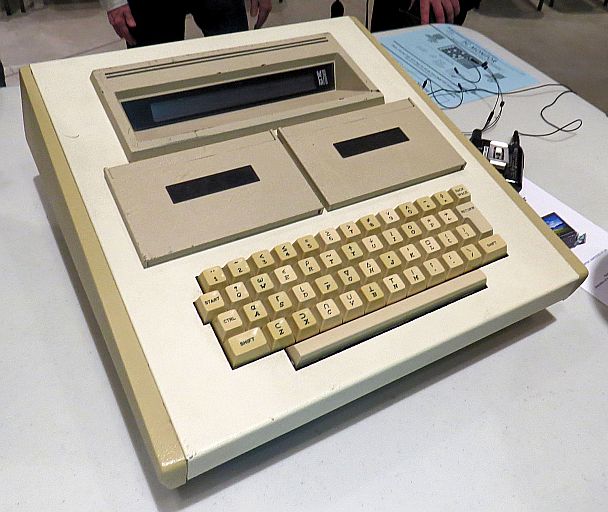
The image above is from Wikimedia Commons, licensed under the Creative Commons Attribution Share-Alike International License, and is thus available for your use under the same terms.
Its author is Nash Gordon.
Over this same time frame, the microcomputer revolution was starting.
The first commercially available microprocessor, the Intel 4004, which was originally designed for a calculator from Busicom, and which therefore was not permitted to be used in calculators by anyone else, was announced on November 15, 1971. It took the 8-bit Intel 8008, announced in April, 1972, however, to make the idea of inexpensive computers seem like an imminent possibility.

The very first self-contained microcomputer system appears to have been the Q1, which used the 8008, and for which a PL/I "compiler-interpreter" was available. It is said to have been primarily aimed at applications such as order entry, although a brochure for its successor, the Z-80 based Q1/Lite, suggested it was a general-purpose machine. This computer was first delivered in December 1972.
Not visible in the image is its display, a one-line 80-character LED display.
The September 1973 issue of Radio-Electronics featured an article by Don Lancaster on how to build an inexpensive video terminal; the design was called the "TV Typewriter", and such a device would potentially be a handy item for someone with some type of computer, and without ready access to, say, an ASR 33 Teletype through surplus channels. And there were already used PDP-8 computers kicking around.
 |
The image above is from Wikimedia Commons, licensed under the Creative Commons Attribution Share-Alike International License, and is thus available for your use under the same terms. Its author is Nash Gordon. |
Another very early computer system, based on the 8008, originated in Canada, and was actually manufactured in Orillia, Ontario. This was the MCM/70, later dubbed the MCM/700. It dated from 1974; it had a single-line display, and, most impressively, particularly for the time, it offered the APL programming language.
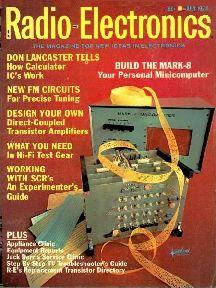
The cover of the July 1974 issue of Radio-Electronics magazine, shown at right, showed a computer you could build at home! It was the Mark 8, based on the Intel 8008 microprocessor.
The Intel 8008 fit in an 18-pin package, as small as that containing many ordinary integrated circuits. It used a single 8-bit bus for data and (in two parts) addresses. As there were two status bits included with the most significant byte of the address, it could only be connected to a maximum of 16K bytes of memory, not 64K, although at the time memory was too expensive for this to be much of a limitation. Initially, however, the support chips for the 8008 were in limited supply.
The Intel 8008 chip itself had been available from April 1972.
The Mark 8 computer based on the 8008 did not make much of a splash at the time.
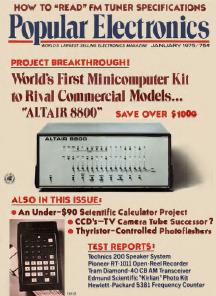
The same was not the case, though, with the January 1975 issue of Popular Electronics. That was the one that had the Altair 8800 on the cover, shown at left, based on the Intel 8080 chip, which had been available since April 1974. This chip was in a 40-pin package, a size in which many other 8-bit microprocessors were also packaged. It had a full 16-bit address bus along with an 8-bit data bus.
Magazines hit store shelves before their printed cover dates; according to Wikipedia, this magazine was distributed in November 1974. That can be said to be when the microcomputer revolution started in earnest.
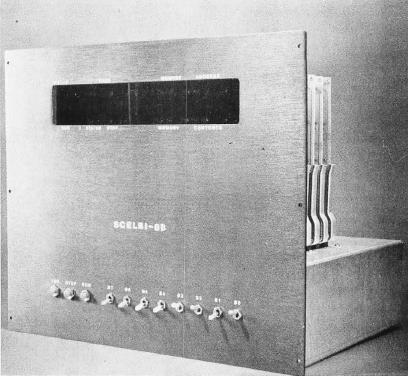
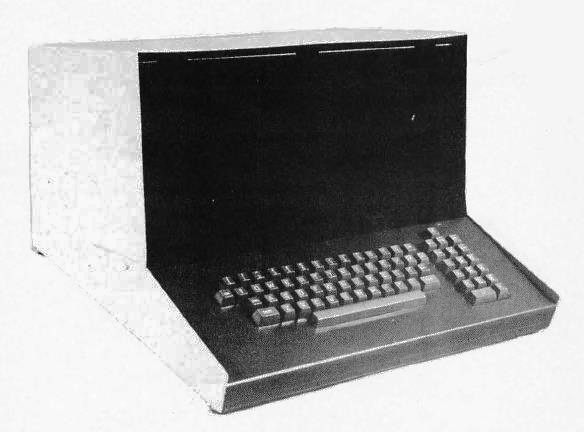
In late 1975, BYTE magazine, starting with its September 1975 issue, one of the earliest magazines to directly address the computer hobbyist market, began publishing.
In its early issues, there were advertisements for another system based on Intel's early 8008 chip, the Scelbi 8B, pictured at left. This was actually a successor to an earlier 8008-based system from Scelbi, the Scelbi 8H. Later, Scelbi would transition to becoming a publisher of books about microprocessors and microcomputing aimed at the computer hobbyist.
Also, Sphere Computer offered, in kit form, a computer with a built-in keyboard based on the Motorola 6800, in which a monitor could be installed, the Sphere I computer, pictured at right, which preceded even the pioneering Processor Technology SOL-20, to be discussed below.
The most well-known maker of early systems built around the Motorola 6800 was South-West Technical Products Co., with their SWTPC 6800, pictured below:
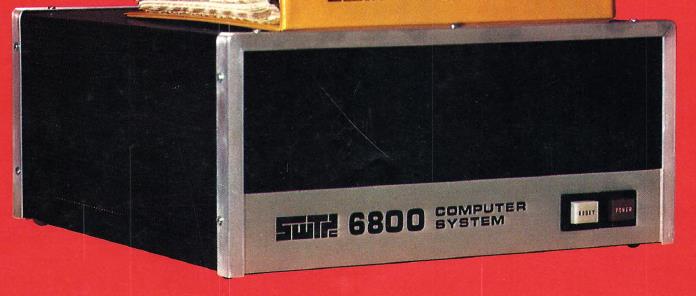
This computer was also advertised in the early issues of BYTE magazine, but in the first issue of BYTE, a video terminal from SWTPC, their first product, appeared instead.
This is an image of a later system from SWTPC, this time using the 6809 microprocessor, with the case open. From it, you can see one important difference between their computers and those built around the S-100 bus: to save money, instead of using sockets for card edge connectors on the motherboard, the cards were connected to the motherboard using Molex connectors.
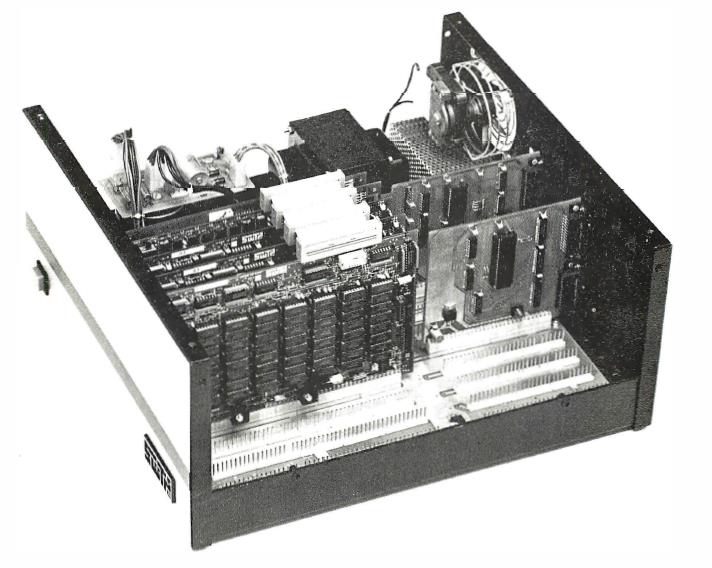
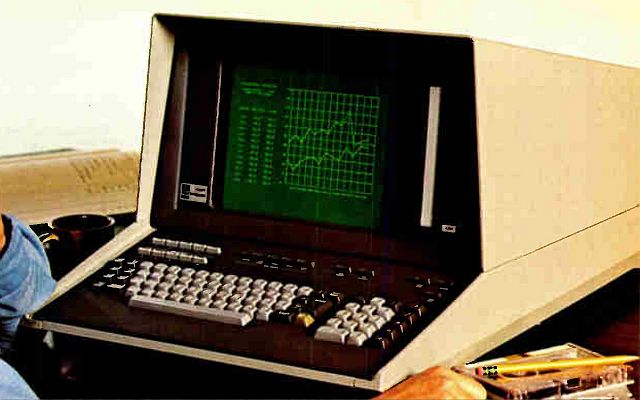
Another computer based on the Motorla 6800 had a more expensive price tag of $6,995, being intended for the professional market.
Tektronix, a company most famous for oscilloscopes, also pioneered storage-tube technology, and used that to make graphical computer displays, and later graphical computer terminals, such as the very popular Tektronix 4010 terminal.
In 1975, they offered the Tektronix 4051 computer, shown at left, which could be programmed in BASIC, and BASIC programs could draw graphical images on its built-in storage-tube display. This has been termed the first personal computer with graphics capabilities.
In late 1983, Tektronix offered the 4051A and 4054A computers, the latter of which used a 19-inch storage tube, which replaced the 6800 microprocessor of the 4051 with a custom 16-bit processor, built from Am2900 bit-slice components. They could also run microcode that executed 6800 code to allow running programs for their predecessors.
An option for the 4054A computer extended its capabilities still further: the CRT was replaced with a dual-phosphor storage tube. In addition to it being possible to draw green vector graphics that would be stored in the tube, changing the voltage of the electron gun allowed orange vector graphics as well, but the lines drawn in this mode needed to be continuously refreshed.
Along with the modified CRT, there was also the option of a graphics coprocessor which handled the task of keeping the orange portion of the image continually refreshed (at least my sources have described the CRT and the coprocessor as two separate options).
The pace of events from then on was rapid.
In June 1976, Texas Instruments produced one of the first 16-bit microprocessors, the TMS 9900. It had an architecture very similar to that of the PDP-11, although there were also important differences. One feature that limited its speed, but allowed the circuitry for a 16-bit microprocessor to fit on a single die at the time, was that its sixteen general registers were all in main memory. A workspace pointer register indicated where they were in memory, allowing quick context switches for subroutines.
Texas Instruments sold minicomputer-like systems based on this chip, such as the 990/4. Later, they also implemented the architecture in faster but smaller integrated circuits, to make the 990/10, a minicomputer version, and they even went on to make the 990/12 which added floating-point in hardware. When, much later, they made a home computer using this chip, the 99/4, its performance was significantly reduced, as it used a very limited amount of actual RAM, and instead used a slower type of memory for many of the functions that RAM would normally be used for in a microcomputer system.
December 1976 marks the first shipment of the Processor Technology SOL-20 computer (announced in the July 1976 issue of Popular Electronics). It was designed to be easier to use than an Altair or an IMSAI (a clone of the Altair, built to a higher standard of production quality); instead of a box with lights and switches, it had a keyboard in it, and hooked up to a video monitor. The regulatory hurdles to including an RF modulator for use with one's TV set hadn't quite been sorted out at that time just yet.
Here is an image of the IMSAI 8080, and of another similar copy of the Altair, this one being the one by Ithaca Intersystems:
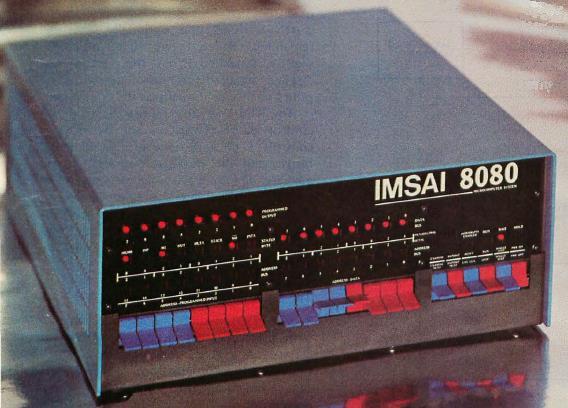
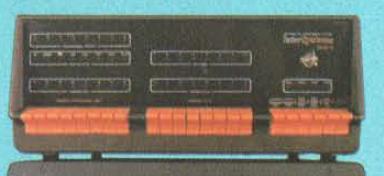
Later, at the 5th West Coast Computer Faire in March, 1980, Ithaca Intersystems would announce the availability of a CPU board which included a Zilog Z8000 16-bit processor, in addition to a Zilog Z-80. Apparently, the card also included the memory for the Z8000, and it was the Z-80 that was connected to the S-100 bus, while the two CPUs could communicate with each other. This allowed one to compute using the power of a 16-bit processor, while using the many 8-bit peripheral devices available for the S-100 bus, which made sense as long as the S-100 bus remained the standard.
And here is one of the Processor Technology SOL-20:
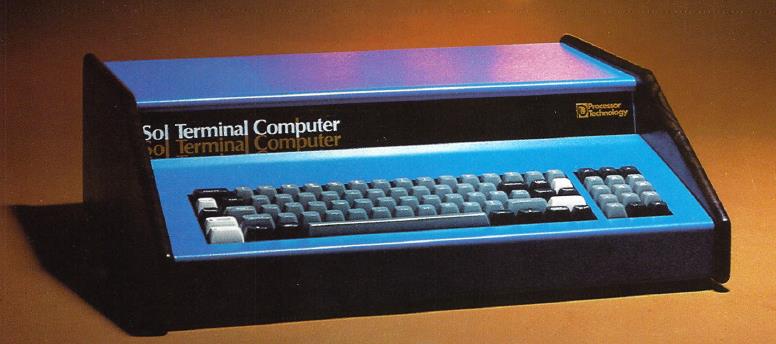
It was moderately popular with early adopters. The most basic configuration, which included the monitor, cost $2,129 fully assembled and tested, but it was also available for $1,649 in kit form. An early advertisement for it showcased its build quality by exhibiting a photograph of the machine with its cover off, to show its internals, as I show below:
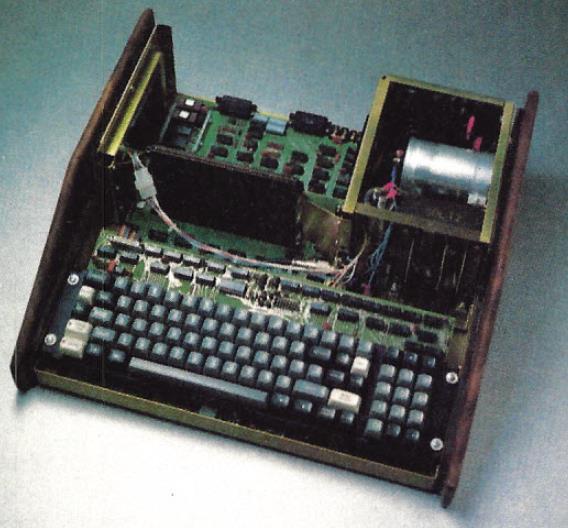
From this photograph, it can be seen that, unlike the Apple II, which had both a built-in keyboard and slots in which to plug add-in cards, instead of allowing small cards to be plugged into the motherboard at the bottom, this one had a card cage; add-in cards lay horizontally, and were plugged into a motherboard that rose up from the processor board in the bottom of the case.
This was, of course, a necessary consequence of the SOL-20 being an S-100 bus machine, like the CPU boxes from Altair, IMSAI, and Ithaca Intersystems pictured previously.
Not all early computers were based on the Intel 8080. Motorola came out with the 6800 microprocessor in 1974. It had the advantage of only requiring a +5 volt power supply, compared with +5 volts, -5 volts, and +12 volts, as the Intel 8080 did. However, while the 8080 had several registers, the 6800 only had one accumulator, and so was less powerful. Systems based on the 6800 tended to be less expensive.
After introducing the Altair 8800, later MITS made the Altair 680, a less-expensive 6800-based alternative to the Altair 8800, pictured below:
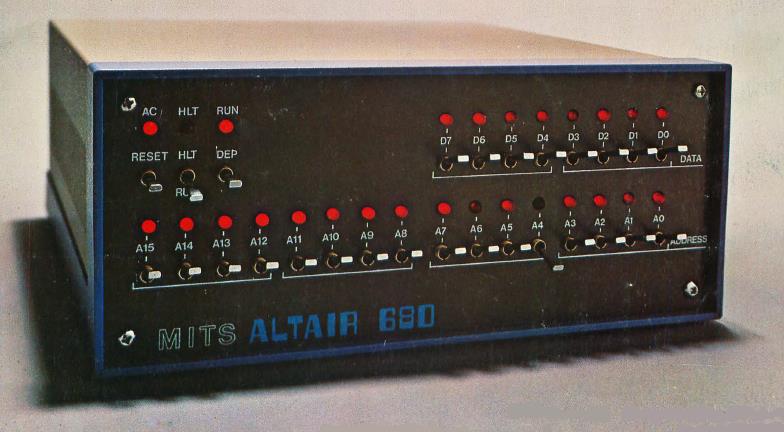
This system was smaller, as it mounted the boards horizontally instead of vertically, and had space for fewer of them. It was also less expensive than the Altair 8800, but it was not particularly successful, probably because it was felt to have been less well supported.
And here is an interesting but relatively little-known computer, the TLF Mini 12 computer. This was a computer built to use the Intersil 6100, a CMOS chip which was an implementation of the PDP-8 architecture. Alas, Intersil was soon bought out by DEC, so as to prevent competitors from piggybacking on the large amount of software written for the PDP-8 computer.
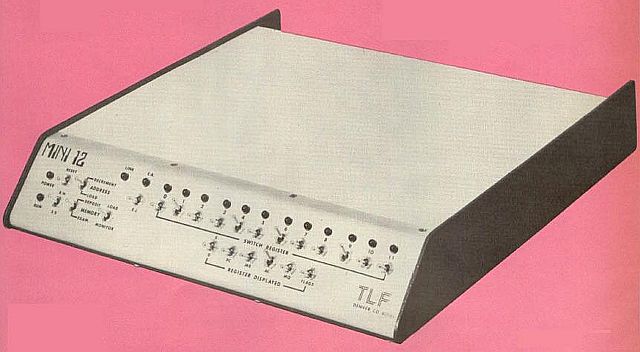
This was not the only microcomputer to make use of the Intersil 6100. Also available was the PCM-12:
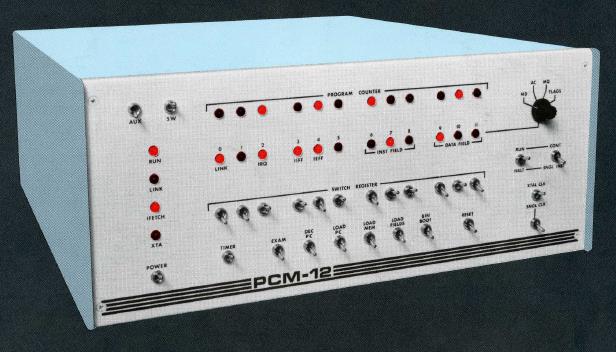
Intel's 8080 was also used in the Heathkit H8 computer; this one had a front panel, but with seven-segment LEDs instead of blinking lights, and a keypad instead of switches, and so the Spiras-65 had apparently started a trend.
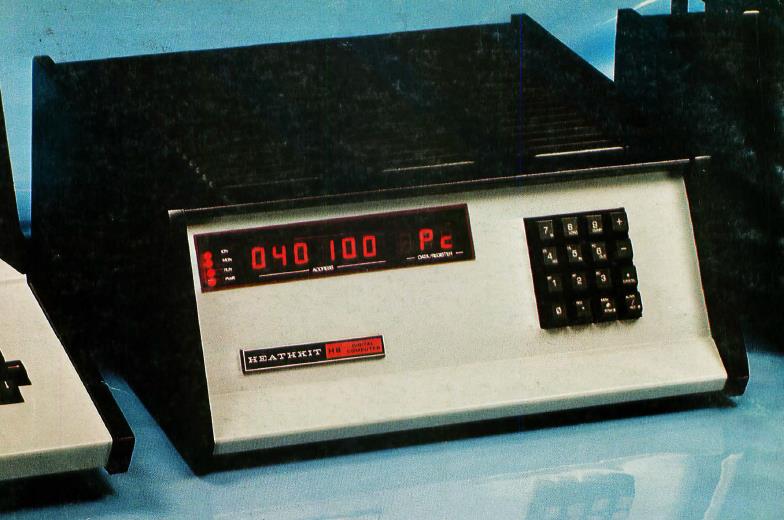
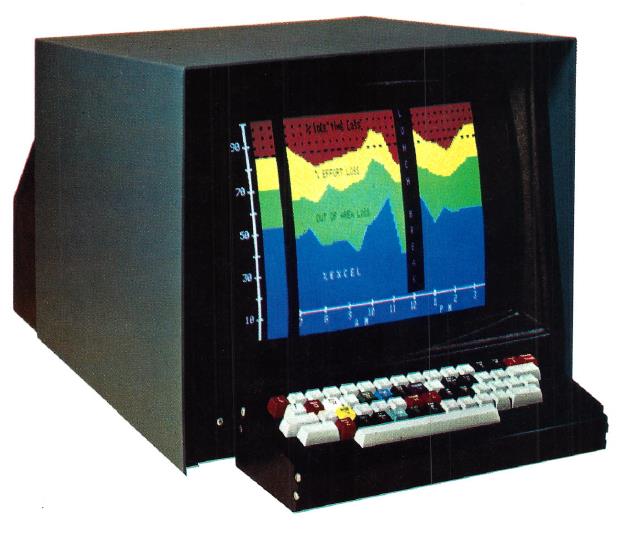
In late 1976, Intelligent Systems Corporation offered an upgrade kit that turned their Intecolor 8001 color terminal into a personal computer. The terminal cost $1,395, and the upgrade kit was an additional $1,295. The unit is pictured at right.
One unfortunate thing about the systems this company offered over its short lifetime is that they didn't format their own floppy disks, so one had to buy formatted floppies from the company; this prevented the growth of a third-party software market for the machine. It is significant in offering a color display prior to the HP 9845, to be discussed below.
It was in the next year that the floodgates opened, as 1977 was the year of the original Commodore PET computer, the first Radio Shack TRS-80, and the Apple II. The Apple II and the Commodore PET were both introduced at the first West Coast Computer Faire, which opened on April 16, 1977. The TRS-80 was announced on August 3, 1977.
Here are pictures of these three computers, from early advertisements for them.

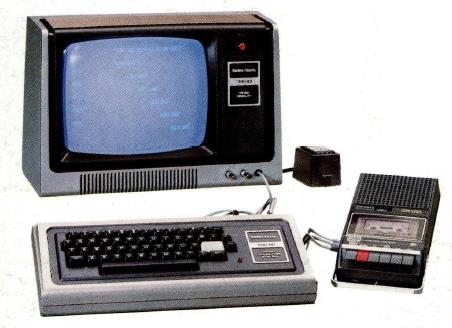
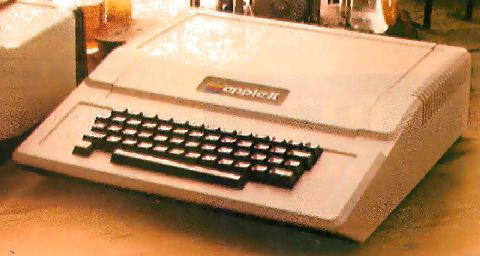
The original Commodore PET was the only one of these three that did not have a normal typewriter keyboard; this was corrected in their later machines, and it was noted at the time that this was a more serious issue than some might have thought. This affected how people reacted to the keyboard of the IBM PCjr much later.
The Apple II computer allowed add-on boards to be installed internally, as illustrated by this photo from an advertisement for an internal Hayes modem for the Apple II:
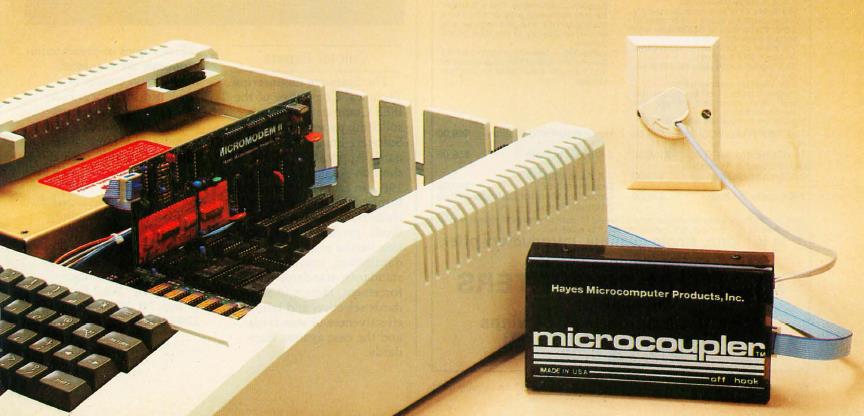
Note the power supply to the left of the modem card.
In August 1977, the SEIKO 5700 computer was introduced in Japan. This 8080-based computer had a one-line text display, and a keyboard which consisted of multiple rectangular arrays of keys, with a numeric keypad in the middle, resembling those of some desktop programmable computers. The later SEIKO 5900 computer from 1979 had a similar keyboard layout, but with one extra column of five keys on the left. This design appears to have been an original reaction to the fact that the typewriter keyboard is a poor fit to the Japanese writing system.
I had thought that the keys were perhaps labelled with BASIC keywords, but in fact this computer had FORTRAN built in, instead of BASIC. This computer was preceded by the SEIKO S-500 programmable calculator which was powered by an 8008 chip, from 1973 or thereabouts.
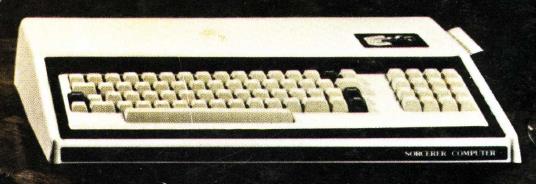
The Exidy Sorcerer, pictured at left, despite being identified with the early days of computers, came out a year after the earliest two of these three famous computers; it dated from April, 1978.
I'm not sure why I am inclined to think of it as though it had preceded those computers, the way the SOL-20 from Processor Technology did. Incidentally, like the SOL-20, it used the S-100 bus. Of course, the Apple II, the Commodore PET, and the TRS-80 all created lineages that continued for years afterward, while there was only the Exidy Sorcerer itself which did indeed belong to a time which was still early in the age of the microcomputer, even if not the very earliest part of that age.
The Exidy Sorcer did not do all that well in the crowded market; the remaining stocks of the machine were bought out, and sold under the name Smart-ALEC by another company.
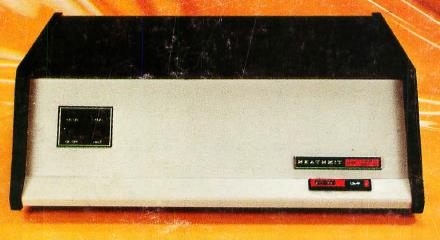
In early 1978, a 16-bit computer became available to ordinary mortals, although it was expensive enough that few of them took advantage of the offer: it is, of course, the Heathkit H11, pictured at right, based on Digital Equipment Corporation's LSI-11 chipset, of which I speak.
This was also the year when North Star offered a 5 1/4" floppy disk drive system, admittedly one using more expensive and harder-to-find hard-sectored floppy disks, for S-100 bus computers. It included North Star DOS, a simple operating system with two-letter commands.
Not too long after the Apple II became available, UCSD Pascal was offered for it. This came with an operating system, the UCSD P-System. UCSD Pascal was also offered for many other computers.
The Pascal compiler only compiled to P-code, which was then interpreted, but interpreting a bytecode instruction set was still much faster than interpreting a program in a computer language such as BASIC.
The P-System operating system worked by means of menus, and switching between menus placed the system in one of several different modes. A T-shirt criticizing this aspect of the P-System was famously worn by one of the developers of Smalltalk.
Be that as it may, in my opinion the UCSD Pascal environment was the first thing that brought a "big computer" feel to microcomputers; before, a microcomputer was more reminiscent of a PDP-8 running FOCAL or Cinet BASIC than a mainframe.
Incidentally, DOS, an acronym for Disk Operating System, was in use long before this, so Microsoft didn't swipe the name from North Star when it came out with PC-DOS for the IBM PC in 1981. The IBM System/360 computer was available in a number of different models with different amounts of processing power, and it could be configured with different amounts of memory. The operating system OS/360 (Operating System/360) was used with larger systems; BOS/360 (Basic Operating System/360) was used with the smallest systems, and initially with all the systems until the other versions of the operating system were completed; there was also TOS/360 (Tape Operating System/360) and DOS/360 (Disk Operating System/360) which were used on most systems not large enough for OS/360. Eventually, other operating systems were developed to support more advanced features such as virtual memory (what we now know as a swap file) and virtualization.
From 1977, an earlier computer using the LSI-11 board, and UCSD Pascal as well, was available, which could challenge the HP 9845 for the title of the first workstation computer. Of course, since UCSD Pascal works by interpreting P-code, had that been the only software system available for it, it would not have had adequate performance, but the option to use a DEC operating system and compilers was also available.
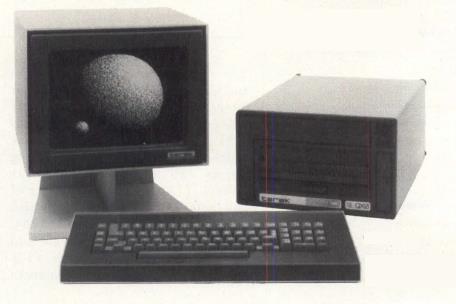
The computer of which I speak is the Terak 8510/a, pictured above. Only black and white graphics were available from this computer; as can be seen from the illustration, dithering was used to allow solid three-dimensional objects to be drawn with appropriate shading.
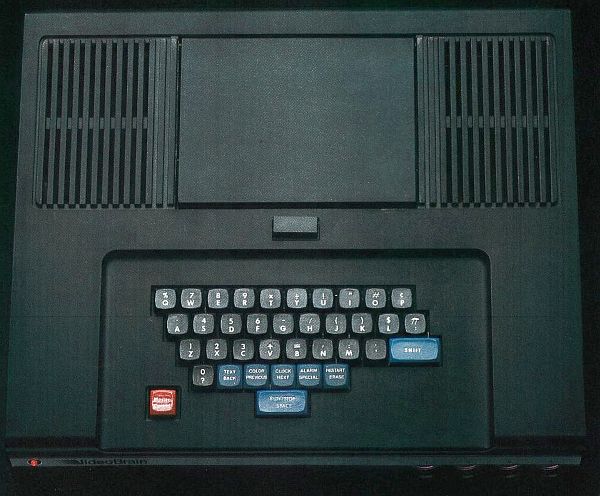
In late 1977, a microcomputer based on the Fairchild F8 microprocessor came on the market. It offered one very exciting feature: the ability to program it using (a form of) APL.
However, the F8 processor was less powerful than the most popular 8-bit processors of the time such as the 8080 and the 6502, and the computer's keyboard, as can be seen from the image at right, was clearly limited, and not a conventional APL keyboard either. It appeared to be a video game with some additional computer functionality rather than a powerful computer, and so its success was limited.
I have found out more information about the VideoBrain and the APL/S language offered for it from this site. While APL/S was mentioned in the advertisements for the machine, it only became available as one of the last programs for it, and very few copies apparently were made. So many people had heard of it, but very few actually had the opportunity to encounter it.
The arrangement of the keyboard of the VideoBrain Family Computer was as follows:
---------------------------------------
| % | 7 | 8 | 9 | × | ÷ | ! | " | # | ¢ |
| Q | W | E | R | T | Y | U | I | O | P |
-----------------------------------------
| . | 4 | 5 | 6 | - | / | ( | ) | $ | π |
| A | S | D | F | G | H | J | K | L | ; |
-----------------------------------------
| 1 | 2 | 3 | + | = | , | : | * | |
| Z | X | C | V | B | N | M | ' | SHIFT |
---------------------------------------
| 0 |txt|col|clk|alm|rst|
| ? |bak|prv|nxt|spe|era|
--- -----------------------
|mst| |run/stp|
|ctl| | SPACE |
--- -------
The keyboard definitely did not include the full APL character set, but it
did include a few special characters, ×, ÷, and
π. Of course, only the first two of those three were part of APL,
but APL/S did use π for ![]() . For the
four basic arithmetic operators, thus, it was able to
use +, -, ×, and ÷, and use the asterisk (*) for exponentiation,
thus following APL in that respect.
. For the
four basic arithmetic operators, thus, it was able to
use +, -, ×, and ÷, and use the asterisk (*) for exponentiation,
thus following APL in that respect.
However, = was used for assignment, with the relational operators being LT, LE, EQ, GE, GT, and NE, with AND, OR, and NOT as logical operators, the abbreviations used in FORTRAN, but without the periods. And the trigonometric functions were SIN, COS, and TAN.
The S in APL/S stood for Subset, and APL/S only supported one-dimensional arrays.
Unlike APL, it did not have a "goto" operator, but instead had structured control statements.
A relatively obscure computer intended for use by businesses was the Durango F-85. This 8085A-based computer came with a BASIC interpreter, as it preceded the introduction of CP/M. The keyboard and printer, in a form resembling a printing terminal, had the floppy disk drives and a monitor attached on the left, as can be seen in this image:
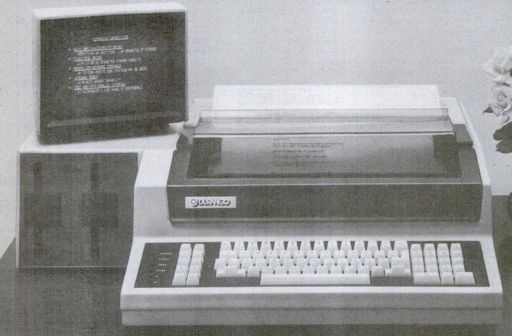
I included this computer, after hearing about it, to show an example of an early all-in-one fully integrated computer system.
The first model of the HP 9845 was specifically announced in April 1978, although information about the forthcoming series as a whole had been released more than a year previously.
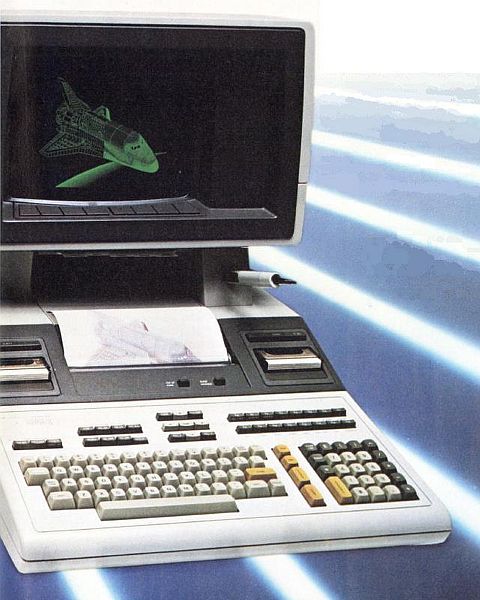
Color graphics would be added in a later model, the 9845C, to come out in 1980. While the most basic models of the 9845 started at over $11,000, the 9845C started at more than $32,000, so it was for serious purchasers.
The color graphics involved three bit planes, allowing each pixel to have eight possible colors. However, the system included software support for a palette of 4,913 colors: these were achievable through dithering; a 4 by 4 square of pixels could have from 0 to 16 pixels with each of R, G, and B turned on.
The order in which pixels were used for dithering in the 9845 is shown in the table below:
1 13 4 16 9 5 12 8 3 15 2 14 11 7 10 6
and so in addition to using 4,913 different colors at 1/4 resolution, it was also possible to use a subset of those colors, 125 different colors, at 1/2 resolution; those in which each of R, G, and B had the values 0, 4, 8, 12, and 16.
Here is an image illustrating the appearance of this dithering scheme:

Of course, though, the individual pixels on the screen of the 9845 were larger than those on the screens of current monitors: its resolution was 560 by 455. Also, it may be noted that this technique doesn't allow any possibility of gamma correction, so the effective number of distinguishable colors may be smaller than the total of 4,913 that is possible.
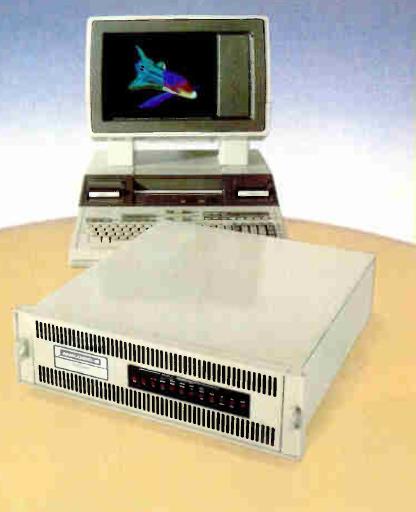
In advertising photographs, the 9845C was often shown with an image of a line drawing of the Space Shuttle, with areas on the surface in colors suggesting that a calculation of temperatures parts of that surface would reach during re-entry had taken place.
The 9845 did have more impressive computational capabilities than I initially thought, as the discussion to follow will examine, but performing an aerodynamic CFD (computational fluid dynamics) code for the Space Shuttle would be a task better suited to a Cray I than a 9845.
However, Analogic had that covered. Shown at right is an image of their AP445 array processor, designed to attach to the Hewlett-Packard 9845C, with a 9845C in the background.
Like a number of programmable calculator products from Hewlett-Packard, it used a CPU that was derived from Hewlett-Packard's 211x series of microcomputers. And several accounts referred to it as doing arithmetic on numbers in BCD form. Yet, this machine was also referred to as the first workstation computer.
There seemed to be a glaring contradiction between these things, since if the computer performed floating-point arithmetic at the speed of a pocket calculator, even making allowance for its date of introduction, its performance would not allow it to fulfill that role.
It took me a while to research this question, and I wasn't able to find all the answers, but what I did find does seem to be enough to vindicate the 9845 as a legitimate workstation.
The first clue I encountered was that it internally represented floating point numbers as having decimal exponents that ranged from -511 to +511. So the exponents were represented as binary numbers, not as pairs of BCD digits - even though the BASIC interpreter, when printing and reading floating-point numbers, restricted the range to that from -99 to +99, for compatibility with calculators.
The part of the processor in the 9845 (also used on other models in the series, such as the 9825) that handled floating-point numbers was called the EMC, for Extended Math Chip. Given that engineers are very much aware of the equation E=mc2, this is at least a hint that they thought it was smart.
One thing I read said it could process four digits at a time. Four BCD digits, or just four binary digits, so that it could process BCD at all?
Another noted that its instructions operated on whole floating-point numbers.
According to one source, the EMC also contained a 16x16 binary multiplier. This led me to a chain of speculation that ultimately proved incorrect:
How is a binary multiplier going to help making it faster to multiply values represented as BCD digits?
Maybe the engineers at HP had some fancy algorithm that I'm not aware of that allowed this, but still, it seems like doing things the hard way around. And back in those days, the engineers at HP were definitely not stupid; they came up with some of the most ingenious products anywhere, and in many respects, the HP 9845 itself is evidence that a lot of very capable people worked on its design.
There is a way to perform floating-point arithmetic which gives exactly the same results as arithmetic on floating-point numbers composed of decimal digits, and yet makes use of conventional binary arithmetic units, without any need for special circuitry to perform decimal arithmetic instead.
Just represent a floating-point number as a binary integer multiplied by a power of ten.
John von Neumann used this technique in the JOSS interpreter, and Intel uses this technique today in its implementation of the Decimal Floating-Point standard within the later versions of IEEE 754.
That would allow a 16 by 16 binary multiplier to be helpful without any need to keep spending time converting from binary to decimal. However, I have now learned from U. S. Patent 4,075,679, which describes the 9825, which used the same EMC chip, in great detail that indeed the EMC chip did work directly on floating-point numbers in BCD form, so this guess of mine was mistaken.
Another thing that the 9845 included was hardware to specifically assist in drawing lines on the display. This was built using the Am2900 bit-slice, and a later version of the 9845, the 9845 Model 200, or the System 45 with Option 200, replaced the unit's central processor with one made from Am2900 bit-slices as well for higher performance. This option was also available for the black and white 9845B, and it was only introduced in 1983.
As a machine that could sit on the desktop, with powerful computing capabilities for its time, and the ability to present the results of computations in full-color graphics - in a manner that achieved more than might be expected with the limits of the graphics hardware available - the HP 9845C definitely offered a glimpse of the future of computers on the desktop.
The power and low cost of microcomputers had not gone unnoticed by small businesses. So not all microcomputers were designed for use in the home; some were instead designed for use by businesses. Many of those used either an Intel 8080 processor, or the Zilog Z-80, which was compatible with the Intel 8080 but included additional features as well, and ran the CP/M operating system. Radio Shack produced the Radio Shack Model II computer, aimed at business users, which had a different operating system which was arguably better than CP/M.
A BASIC compiler, CBASIC, was offered for CP/M systems by a third-party company.
Six examples of CP/M-based computers are illustrated below, the Osborne I, which, in order to be portable, had a 5-inch CRT screen, and thus displayed 56 columns instead of the standard 80, the Kaypro II portable computer, which had a 9-inch screen with 80 columns, to compete with the Osborne I, the Intertec Superbrain computer, the Toshiba T200, and the computer made by Magic computers, and a Tiki-100 computer from Norway. And then a Radio Shack TRS-80 Model II is also shown.

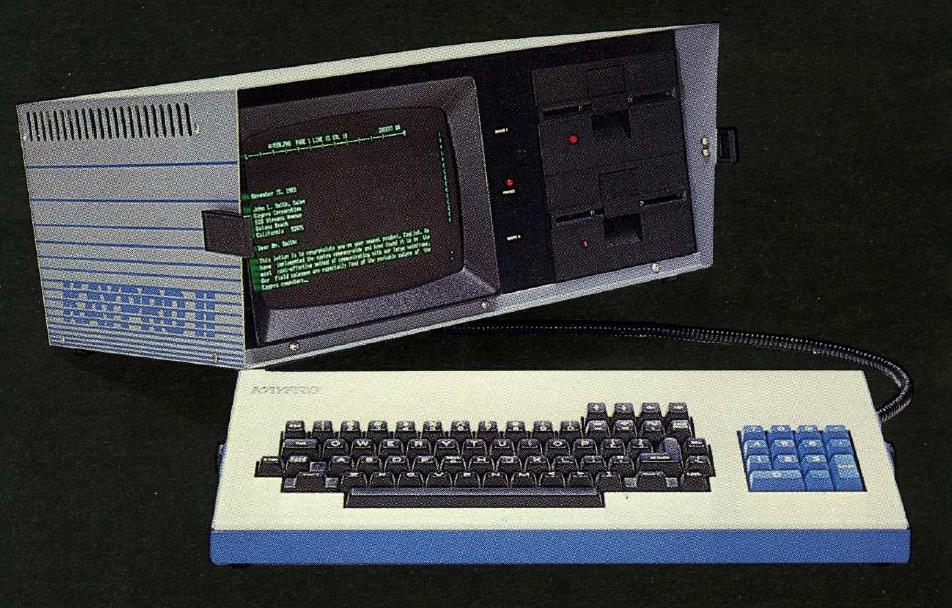
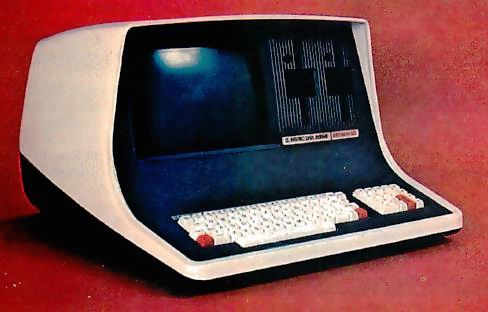
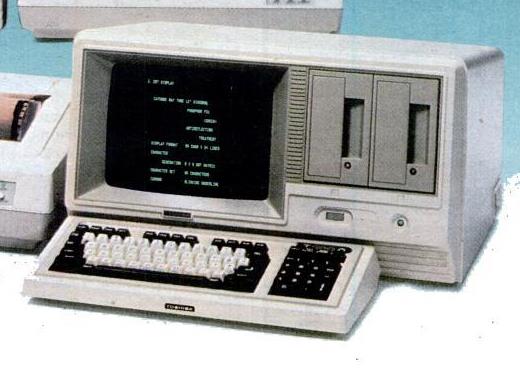

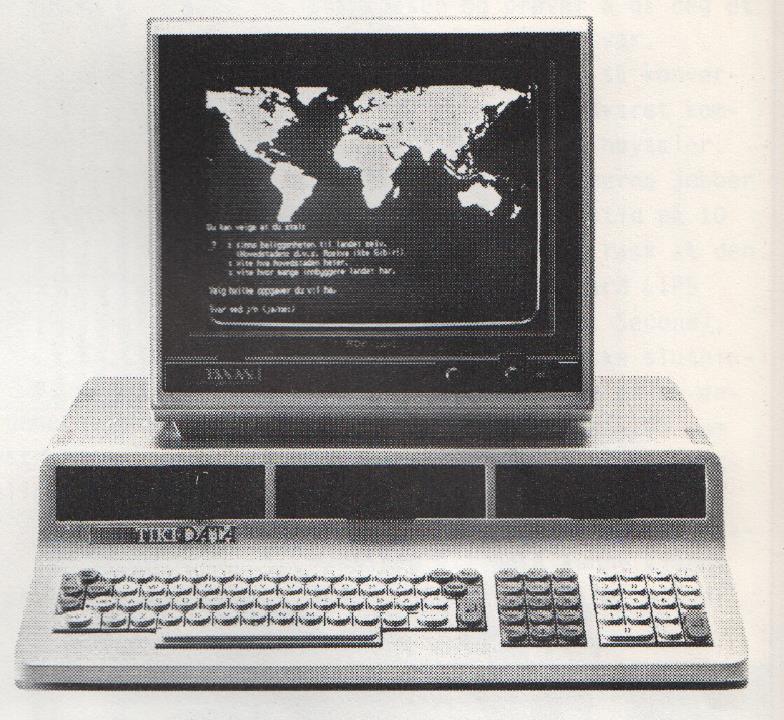
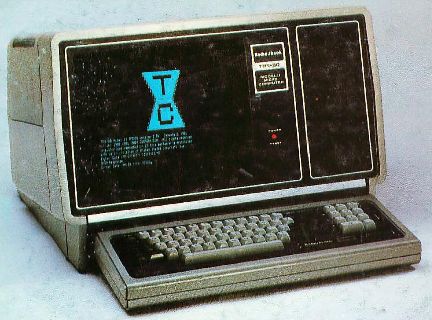
The Magic computer was a later computer of this type, as is obvious from its styling, based on that of the IBM Personal Computer. This image is from one of their earliest advertisements; their most common advertisement was in the form of a comic strip in which its virtues were extolled. Or, rather, in which it was attempted to persuade the reader that he really didn't need an IBM PC, as a CP/M-based computer with an 8-bit processor such as this one was a more efficient way to get all the same work done. It certainly was true that a lot of the early IBM PC programs were just ports from CP/M, but that would have been more persuasive had that computer been vastly cheaper than the cheapest IBM PC clone, instead of just a little cheaper than the original IBM PC itself.
The Tiki-100 computer illustrates how diversity in how computers were styled existed. The keyboard is of the European style; not too many other examples of that are shown here, that of the Sinclair QL being the most notable, but such keyboards are often found on Nixdorf and Siemens computers. The keyboard is built into the system unit, as is the case for the Apple II computer, or a Tandy 1000 EX, but it also has room for 5 1/4" floppy disks, and, because of the wide keyboard, not just one or two of them, but three, side by side.
Incidentally, if the image of the Intertec Superbrain computer above looks somehow familiar, you are not imagining things. Here is an image of the ADDS Consul terminal:
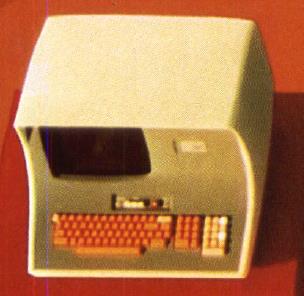
Above, it was noted that the Intecolor and Compucolor machines made by ISC didn't offer the option to format one's own floppies, preventing the growth of a third-party software market for the machines. The company eventually did address the lack of software for their systems, by coming out with a version of their computer which ran CP/M:
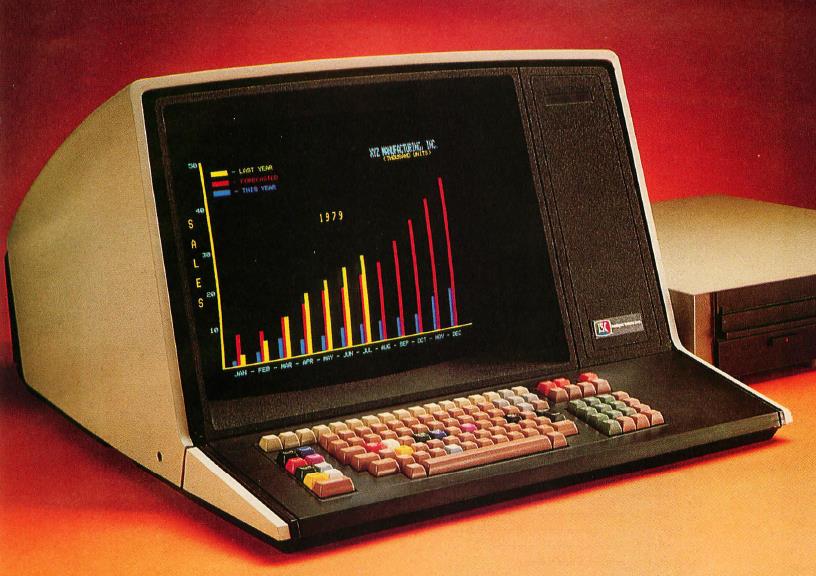
The Intel 8086 chip was released on June 8, 1978. This powerful 16-bit microprocessor could address up to one megabyte of memory, since the contents of its 16-bit segment registers were shifted left by four bits before being added to the 16-bit addresses in instructions to form physical memory addresses. (Since the segment registers could be loaded by user programs, the virtual address space - or, more precisely, the address space seen by the programmer; swap files and virtual memory came along with Windows and the 80286 - was also one megabyte in size.) Before the IBM PC, some other computer systems based on the 8086 were sold, but they tended to be expensive.
The later, more powerful, Motorola 68000 was announced in September, 1979, and the first samples were available in February 1980, with general availability in November, 1980.
There was a third early 16-bit design (other than the Texas Instruments TMS 9900, the earliest) which was announced in early 1979, before the Motorola 68000; it was less successful in the market, with only a few systems being available which used it; the Zilog Z8000.
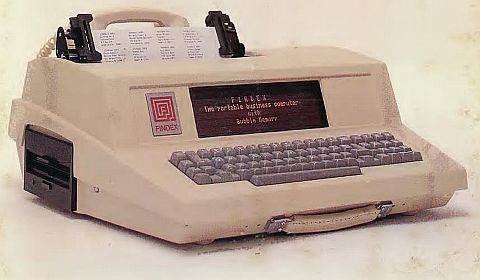
Since luggables like the Osborne 1 and the Kaypro were pictured above, it seems fitting to note the Findex on this page as well. Note that it has both a printer and a modem - with an acoustic coupler - built in. As well, it uses a plasma display instead of a CRT.
This early unit, possibly a prototype, from a brochure, is a light cream color; most production units were a dark color instead.
However, all these characteristics exclude the main feature of this computer. Its name, "Findex", suggests that it claims to have the ability to retrieve information from a large collection of data stored within it. That, however, did not mean that it had an internal hard disk drive.
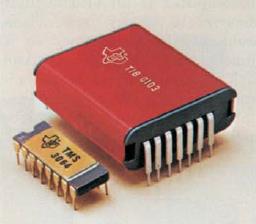
Instead, its primary feature, one that led to a high price that limited its popularity, was that it included bubble memory. This was a form of non-volatile solid-state storage... that, unlike the otherwise similar charge-coupled device chips (which themselves ended up finding more use as camera sensors than as non-volatile storage) had to be kept in a magnetic field to function.
At right is an image from a Texas Instruments advertisement, showing a conventional chip, a 65K CCD non-volatile memory, on the left, and Texas Instruments' first magnetic bubble memory, with 93 kilobits capacity, on the right; note the larger size of the package, in order to include permanent magnets and magnetic shielding.
Of course, soon after, the capacity of magnetic bubble chips went up considerably, up to one megabit, before the technology was abandoned.